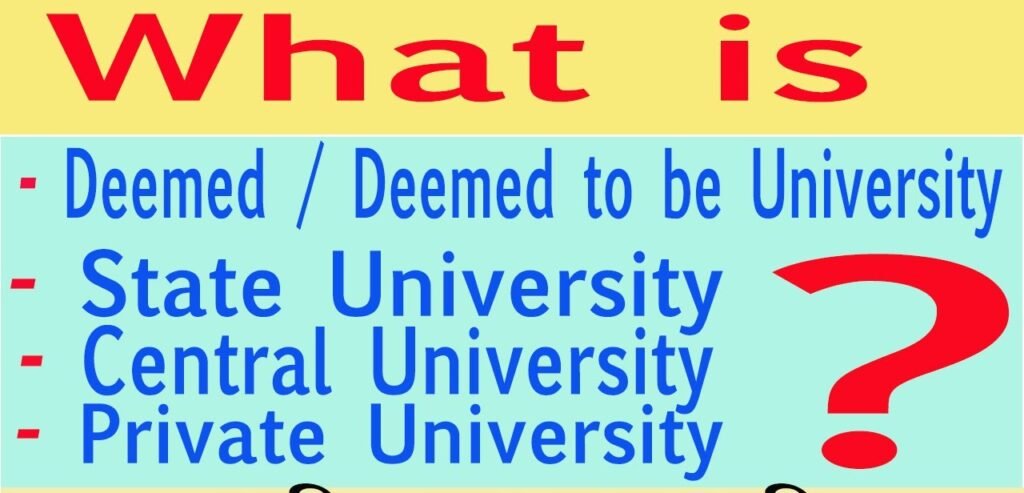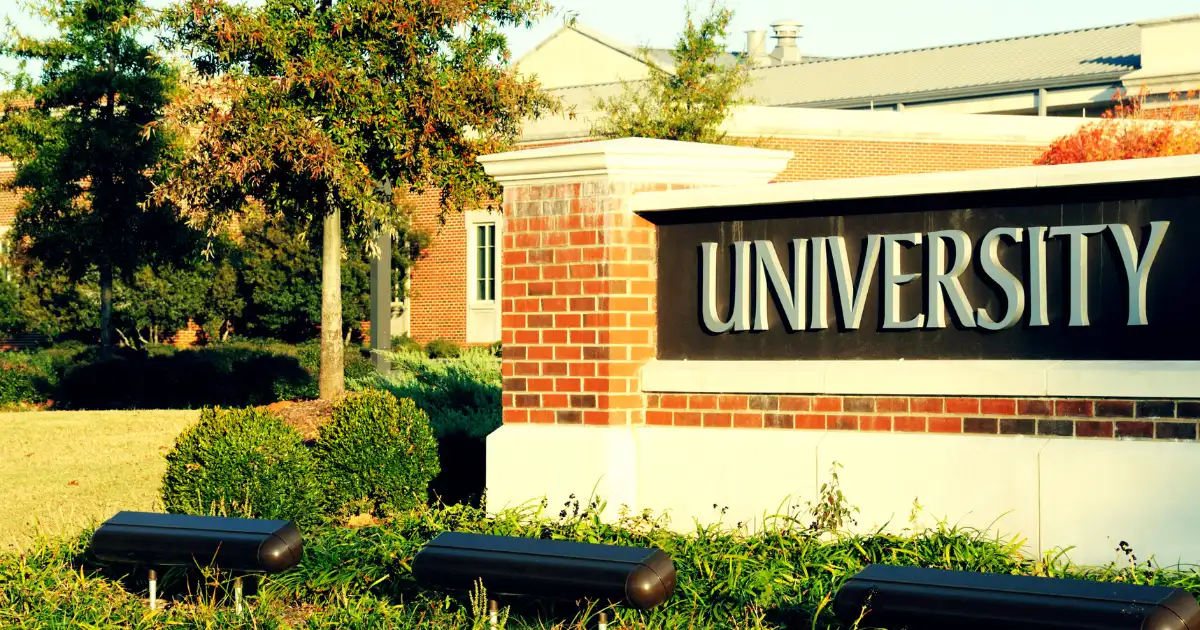State universities are publicly funded and typically have lower tuition fees. Private universities rely on private funding and often have higher tuition costs.
State universities are funded by the government, making them more affordable for in-state residents. They often offer a broad range of programs and facilities due to their larger size and budget. Private universities, on the other hand, are funded through tuition, donations, and endowments.
This financial structure allows them to offer smaller class sizes, personalized attention, and potentially higher academic standards. Both types of institutions provide unique benefits and opportunities, making the choice dependent on individual preferences and financial considerations. Understanding the differences can help students make informed decisions about their higher education paths.
Tuition And Fees
Deciding between a state university and a private university can be tough. One key factor is the tuition and fees. The cost of education varies greatly. This section explores these differences.
Cost Comparison
State universities often charge lower tuition. This is due to state funding. Private universities rely on private funds. Thus, their tuition fees are higher.
| Type of University | Average Tuition (Per Year) |
|---|---|
| State University | $10,000 – $20,000 |
| Private University | $30,000 – $50,000 |
Financial Aid
Financial aid can ease the burden of tuition fees. Both types of universities offer help. State universities often provide need-based aid. Private universities might offer merit-based scholarships.
- Need-Based Aid: Based on financial need, more common in state universities.
- Merit-Based Scholarships: Awarded for academic or other achievements, often seen in private universities.
Understanding these differences helps in making an informed decision. State universities are generally more affordable. Private universities may offer more scholarships. Choose based on your financial situation and goals.
Class Sizes
Choosing between a state university and a private university can be tough. One major factor to consider is class sizes. Smaller class sizes often mean more personalized attention. Larger classes might offer less direct interaction. Let’s dive into the details.
Student-to-teacher Ratio
The student-to-teacher ratio is a big difference between state and private universities. Private universities often have smaller classes. This results in a lower student-to-teacher ratio.
| Type of University | Average Student-to-Teacher Ratio |
|---|---|
| State University | 20:1 |
| Private University | 10:1 |
Impact On Learning
Class sizes directly affect learning experiences. Smaller classes allow for more individual participation.
- More time for student questions
- Better interaction with professors
- Increased engagement in discussions
In larger classes, it is hard to ask questions. Professors might not know all their students. This can lead to a less personal learning experience.
- Private universities offer more personalized feedback.
- State universities might have limited one-on-one time.
Think about class sizes when choosing a university. They can make a big difference in your education.
Campus Facilities
Choosing between a state university and a private university often depends on the campus facilities. Both types of institutions offer various amenities. Let’s explore the differences in library resources, housing, and dining.
Library And Resources
Libraries at state universities are often vast. They may have millions of books and research materials. Some state university libraries are also open to the public.
Private universities often have specialized collections. These libraries may offer unique resources for specific fields. Students may find cutting-edge technology and exclusive databases.
Comparison Table:
| State University Library | Private University Library |
|---|---|
| Large collections | Specialized collections |
| Public access | Exclusive access |
| Research materials | Cutting-edge technology |
Housing And Dining
State universities usually offer more housing options. Dorms may vary from basic to luxurious. State universities often have multiple dining halls.
Private universities may offer more personalized housing. Dorms are often well-maintained and modern. Dining options may include gourmet meals and special diets.
- State University Housing:
- Basic dorms
- Luxurious dorms
- Multiple dining halls
- Private University Housing:
- Personalized housing
- Modern dorms
- Gourmet meals
- Special diets

Credit: m.youtube.com
Academic Programs
Choosing between a state university and a private university involves many factors. One key aspect is the academic programs offered. Both types of institutions provide unique opportunities and experiences.
Variety Of Majors
State universities typically offer a wide range of majors. They often have large student bodies and can provide numerous academic disciplines. This variety includes fields like engineering, business, arts, and sciences.
Private universities may offer fewer majors but often specialize in certain fields. These institutions frequently focus on liberal arts, sciences, or business. The smaller size can lead to more personalized education.
| State University | Private University |
|---|---|
| Wide range of majors | Specialized fields |
| Large student body | Smaller student body |
| Many disciplines | Focused disciplines |
Specialized Programs
Specialized programs at state universities often cater to a broad audience. They include professional degrees like law, medicine, and engineering. These programs are usually well-funded and have extensive resources.
Private universities excel in niche programs. They might offer unique courses tailored to specific interests. Examples include fine arts, advanced research, and innovative technologies.
- State University: Law, Medicine, Engineering
- Private University: Fine Arts, Advanced Research, Innovative Technologies
Admission Requirements
Choosing between a state university and a private university can be challenging. One of the key factors to consider is the admission requirements. These requirements can vary greatly between the two types of institutions. Understanding these differences will help you make a well-informed decision.
Acceptance Rates
State universities generally have higher acceptance rates. They aim to serve a larger student population. This makes them more accessible to a broader range of applicants.
Private universities, on the other hand, often have lower acceptance rates. They tend to be more selective. This exclusivity can mean a more competitive application process.
| University Type | Average Acceptance Rate |
|---|---|
| State University | 70% |
| Private University | 30% |
Entry Criteria
The entry criteria also differ between state and private universities. These criteria can include GPA, test scores, and extracurricular activities.
- State Universities:
- Generally require a minimum GPA of 2.5.
- Standardized test scores (SAT/ACT) are often needed.
- Some consideration for community service and extracurriculars.
- Private Universities:
- Typically require a higher GPA, usually above 3.0.
- Higher standardized test scores (SAT/ACT) are expected.
- Strong emphasis on extracurricular activities and personal essays.
Both types of universities look for well-rounded students. Yet, private universities often have more stringent requirements.
Extracurricular Activities
Extracurricular activities are essential for student development. They provide a platform to explore interests and talents beyond academics. Both state and private universities offer a range of activities. Still, there are differences in the opportunities available.
Clubs And Organizations
State universities usually have a wide variety of clubs and organizations. Due to their larger student populations, they can support numerous student-led groups. These clubs range from academic societies to hobby-based groups.
Private universities also offer clubs and organizations. They might have fewer options due to smaller student bodies. But, they often provide more specialized clubs that cater to niche interests.
Sports And Recreation
State universities often have extensive sports facilities. They typically offer a broad range of sports, from football to swimming. Their larger budgets and student bodies allow for more diverse recreational activities.
Private universities may have smaller sports programs. Still, they often focus on quality over quantity. Their facilities are usually well-maintained, providing a high-quality experience for students.
| Aspect | State University | Private University |
|---|---|---|
| Clubs and Organizations | Large variety, many options | Specialized, fewer options |
| Sports and Recreation | Extensive, diverse sports | Quality-focused, well-maintained facilities |
Funding And Resources
Understanding the differences in funding and resources between state and private universities is crucial. These factors significantly impact the quality of education, facilities, and opportunities available to students. Below, we delve into how state universities and private universities fund their operations and the resources they provide.
State Funding
State universities primarily rely on government funding. This means they receive money from state taxes. As a result, state universities often have lower tuition fees. They aim to make education accessible to a larger population.
The government also provides grants for specific research projects. This boosts the university’s ability to innovate. Here is a brief overview of the key aspects of state funding:
- Funding Source: State Taxes
- Tuition: Generally Lower
- Research Grants: Government-funded
Private Endowments
- Private universities depend heavily on private endowments. These are funds donated by alumni, philanthropists, and other private sources.
- This can lead to higher tuition fees. However, private universities often offer generous scholarships.
- Private endowments allow universities to invest in state-of-the-art facilities. This includes advanced research labs, libraries, and recreational centers.
Below is a quick comparison of private endowments:
- Funding Source: Private Donations
- Tuition: Generally Higher
- Scholarships: Often More Generous
By understanding these funding and resource structures, students can make informed decisions about their education.

Credit: www.fiveable.me
Career Opportunities
Choosing between a state university and a private university can impact your career opportunities. Both types of institutions offer unique advantages. Let’s explore the key differences in terms of career opportunities.
Internship Programs
Internships play a crucial role in shaping your career. State universities often have partnerships with local businesses. This provides students with a broad range of internship opportunities.
Private universities, on the other hand, may have exclusive agreements with top-tier companies. These partnerships can sometimes offer more prestigious internship positions. This is particularly beneficial for students seeking specialized roles.
| State Universities | Private Universities |
|---|---|
| Local business partnerships | Top-tier company agreements |
| Wide range of opportunities | Specialized and prestigious roles |
Alumni Networks
The strength of an alumni network can greatly influence career opportunities. State universities usually have a larger number of graduates. This results in a broader alumni network.
Private universities often have more engaged and well-connected alumni. These alumni can provide valuable job referrals and networking opportunities.
- State Universities: Larger but less connected alumni network.
- Private Universities: Smaller but more engaged alumni network.
A strong alumni network can open doors to exclusive job positions and mentorships.

Credit: amberstudent.com
Frequently Asked Questions
Are Private Universities Better Than State?
Private universities often offer smaller class sizes and personalized attention. State universities typically provide more affordable tuition and diverse programs. The choice depends on individual needs and preferences.
What Is The Difference Between A State University And A University?
A state university is publicly funded and operated by the state government. A university can be public or private, offering diverse programs.
What Are The Advantages Of A Private University?
Private universities offer smaller class sizes, personalized attention, and diverse programs. They often have better facilities and strong alumni networks.
Which Is Better, Public Or Private University In The USA?
The choice depends on your priorities. Public universities offer lower tuition and diverse programs. Private universities provide smaller classes and personalized attention. Consider your budget and academic goals.
Conclusion
Choosing between a state university and a private university depends on individual needs and goals. Both offer unique benefits and opportunities. Consider factors like cost, class size, and available programs. Make an informed decision that aligns with your personal and academic aspirations.
Your future success depends on finding the right fit for you.
- What is the Difference between Common Application and University Application?
- How Much are University Tuition Fees in the UK: 2024 Cost Guide
- What to Do If Your University Application is Rejected: Complete Guidelines
- Why It is Important in the University Application Process: Key Insights
- Difference between State University And Private University: Key Insights
- When Does University Application Open for 2025: Key Dates Revealed
- Is It Better to Apply Early for University: Unveil the Advantages
- Can You Claim University Application Fees on Taxes Canada: Find Out Now
- How Will University Benefit from Having You on the Course? Discover!

















Goodd post. I learrn something totally new and challenging on websites I stumbleupon on a daily basis.
It woll always be usrful too read articles from other writers and practice a little something from other wweb sites.